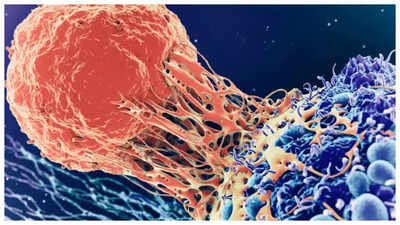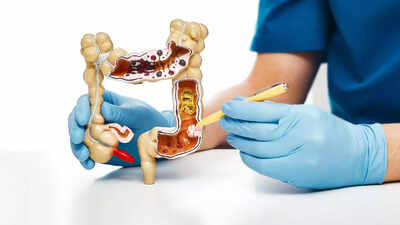The World Health Organization (WHO) and International Agency for Research on Cancer (IARC), have officially classified Hepatitis D virus (HDV) as a cancer-causing agent in humans. The WHO and IARC officially classify HDV as a major cause of liver cancer worldwide, alongside HBV and HCV. To protect your liver health, you need to understand HDV’s nature, as well as its cancer-causing mechanisms, symptoms, risk factors and preventive measures. Let’s dig deeper…What is Hepatitis D virusHepatitis D virus is a small defective virus, which requires hepatitis B virus (HBV) to attack and multiply inside liver cells of humans. This virus cannot independently infect any person. The Hepatitis D virus takes advantage of hepatitis B infection processes, to perform its cycle. People with existing hepatitis B infections or dual HBV and HDV infections, become the only targets for HDV infection. The combined viral infections result in a more severe medical condition than HBV infections would produce by themselves. The virus exists throughout the world, yet it appears more frequently in Asian and African territories, along with Eastern European areas.

How does HDV cause liver cancerThe virus causes liver cancer (hepatocellular carcinoma, HCC) through cell damage that alters cell growth patterns and division processes. The joint action of HDV and HBV causes liver inflammation, which over time, progresses to cirrhosis, and eventually leads to cancer development. The molecular signature of liver cancer linked to HDV infection stands apart from liver cancers developed from HBV or HCV infections, according to current scientific studies.Some key ways HDV promotes cancer includeGenetic instability: HDV damages DNA molecules and disrupts cellular repair processes, which result in genetic material errors that lead to liver cell malignancies.The viral proteins of HDV trigger cell growth pathways, while simultaneously activating survival mechanisms and inflammation response. The reactive oxygen species levels increase, when HDV proteins are present which also triggers STAT-3 and NF-kB signaling molecules, to promote cancer cell development and survival.Epigenetic changes: HDV affects proteins that control gene expression (without changing DNA code), helping abnormal cell growth.Fibrosis becomes more severe under HDV infection, through TGF-β molecule activation, which leads to tissue scarring. The development of liver cancer becomes much more likely when patients have cirrhosis.HDV causes liver damage independently from HBV through distinct molecular pathways, which makes HDV infection particularly dangerous for liver health.Symptoms and risks of HDV infectionThe detection of HDV becomes challenging because its symptoms match other liver disease symptoms. Common signs include:Feeling very tired or weakNausea and loss of appetitePain or discomfort in the upper right bellyDark urineYellowing of the skin and eyes (jaundice)HDV infection that continues chronically, results in major liver damage, cirrhosis and liver cancer development beyond HBV infection alone. The development of cirrhosis occurs in 80% of people with chronic HDV infection, which dramatically increases their risk for liver cancer and liver failure.The co-existence of HDV and HBV in patients leads to accelerated liver disease progression, which requires urgent detection and treatment because of its severe consequences.How is Hepatitis D Virus transmittedThe transmission of HDV occurs primarily through blood and bodily fluid contact, which shares similarities with HBV transmission. This can happen due to:Sharing needles or syringesUnsafe medical procedures or transfusionsSexual contact with an infected personFrom mother to baby during birth (less common)Hepatitis D infection prevention depends on hepatitis B virus vaccination, because HDV cannot replicate without HBV.Prevention and treatmentHepatitis B vaccination: The complete hepatitis B vaccination series offers full protection against hepatitis B and hepatitis D infections because HDV requires HBV to infect.People can reduce their exposure to the virus, through needle-sharing prevention, safe sexual conduct and screened blood products.People with hepatitis B need to undergo testing for HDV infection, especially when their liver disease shows rapid deterioration.

The current treatment options for HDV are very scarce. The development of new medication bulevirtide, focuses on blocking HDV entry into liver cells. The main focus should remain on controlling HBV infections alongside liver health support.Why is this WHO classification importantThe WHO and IARC classification of HDV as a cancer-causing agent demonstrates the severe health dangers this virus presents to individuals. HDV infection:This virus leads to more severe liver cancer development, at a faster rate than HBV alone.The global community needs to increase awareness about HDV, and develop better testing methods while implementing specific treatment protocols.Preventive HBV vaccination remains the primary strategyGovernments , together with health organisations, should make hepatitis D a priority in their public health strategies to decrease worldwide liver cancer deaths.Sources:Diaz G et al., Molecular Signature and Mechanisms of Hepatitis D Virus–Associated Hepatocellular Carcinoma, PMC (2018)Farci P, Hepatitis D Virus and Hepatocellular Carcinoma, PMC (2021)World Journal of Gastroenterology, Hepatitis D and hepatocellular carcinoma (2015)WHO Fact Sheet, Hepatitis D (2025)WHO News, WHO announces hepatitis D as carcinogenic (2025)Disclaimer: This article is informational only and not a substitute for medical advice






